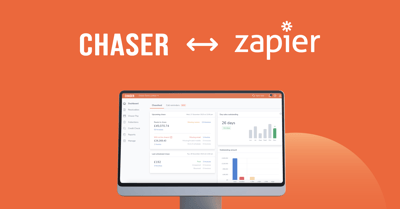Receiving confirmation of an expected payment date for an invoices feels (almost!) as good as getting it paid. It allows you to better manage your cashflow expectations, and means that you’ve successfully opened an important communication channel with your customer.
We know that promised payment is the next best thing to having money in the bank, as such, we’re excited to announce the release of expected payment date inputs within Chaser! It is now easier to manage promised payment dates to make sure they get correctly inputted as soon as possible, ensuring your customers don’t get chased unnecessarily.
Inputting Expected Payment Date
When you receive a promised payment date, you can now input it directly through Chaser and it will push seamlessly into your accounting system where it will be applied to the relevant invoice. Simply navigate to the ‘invoice page’ by clicking on the relevant invoice number within Chaser. You can then select the expected payment date using the in-built calendar!
Managing Expected Payment Dates with Chaser
Correctly managing expected payment dates in Chaser is essential for two main reasons. Firstly, it ensures chasers will only go out about invoices that need them, so that you won’t risk damaging customer relationships by chasing unnecessarily. Secondly, it allows you to focus on collection of problematic invoices where you have been unable to open a dialogue with the customer.
Your first step in managing expected payment dates in Chaser, should be to activate your ‘Don't chase invoices prior to any expected payment date specified’ setting. This will ensure that chasers won’t be sent out unnecessarily about invoices where customers have already promised to pay - which could be considered rude and risk damaging the customer relationship. Don’t worry, once the expected payment date lapses, we get straight back to chasing that invoice!
As part of your credit control workflow, you can now incorporate inputting expected payment dates through Chaser when making calls about problematic invoices. You no longer need to navigate back to your accounting system when you successfully obtain a promised payment date.
We recommend using the Chaser Report for identifying which customers to call as part of your process. You can then easily click onto the ‘invoice page’ straight from the report, where you will be able to input the expected payment date and leave a note against that invoice. You will then have a full history of the chasing conversation and be able to rest assured that expected payment information is up-to-date, all without disrupting your workflow.
When carrying out your regular review of debtors, it’s the perfect juncture to check over replies to chasers as well to ensure that no expected payment dates have ‘slipped through the gaps’ in your inbox! This is easily achieved with the Chaser Report, allowing you to do your whole review and update information without searching through your email inbox or accounting system.
Upcoming Features
We have some brilliant features coming your way to help better manage your tasks within Chaser, and ensure you’re remembering to resume chasing invoices that may have fallen off your radar!
If you have any feature requests or feedback, please feel free to drop me an email at ben.king@chaser.io, I’d love to hear from you!
Would you like to save 7+ hours per week on your credit control and get invoices paid 16 days sooner? Join thousands of businesses using Chaser to transform their credit control.
It takes just 2 minutes to integrate Chaser with your accounting system and you can start chasing overdue invoices instantly. See how easy it is to save time and boost your cash flow with Chaser for free, for 14 days:

.png?width=1200&height=628&name=iconsArtboard%2068%20(1).png)



.png?width=400&height=225&name=Untitled%20design%20(16).png)